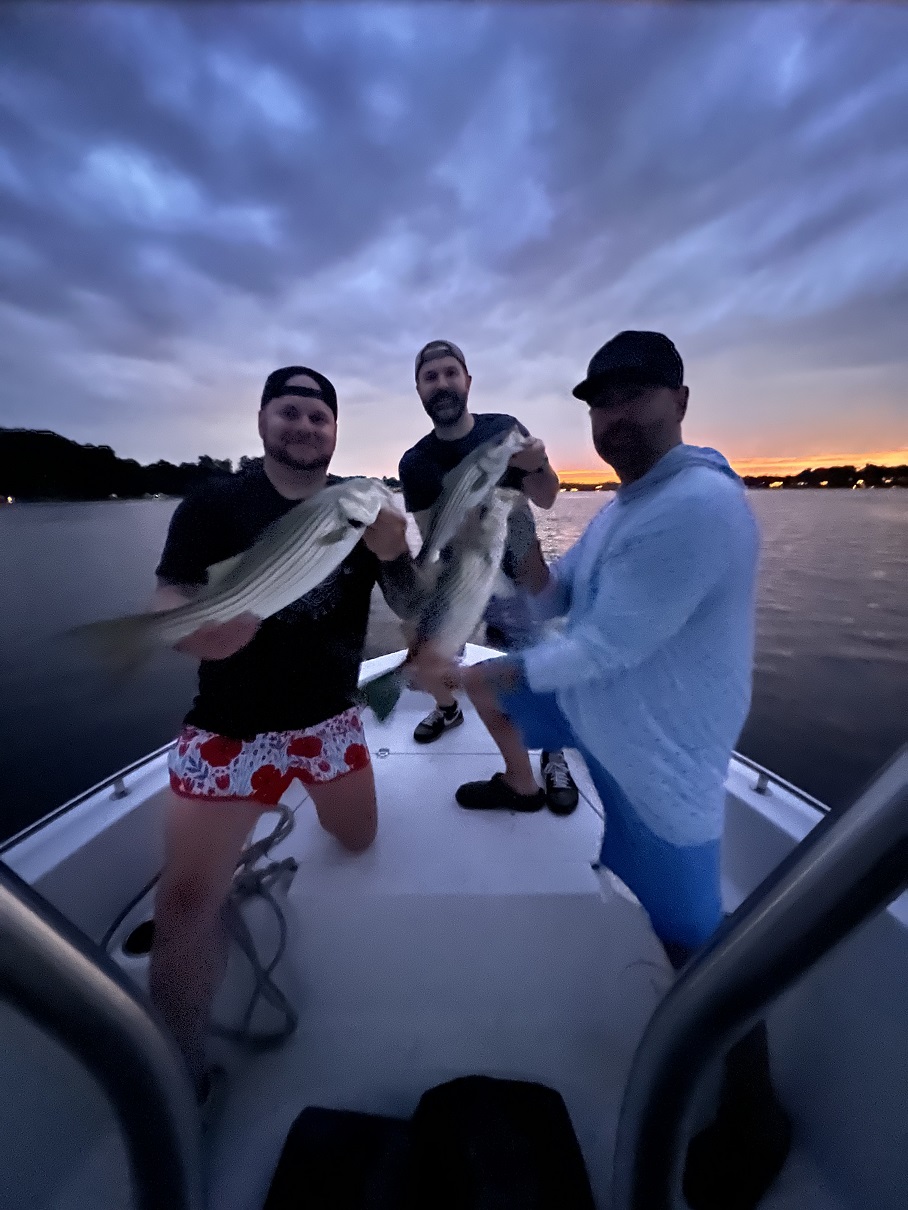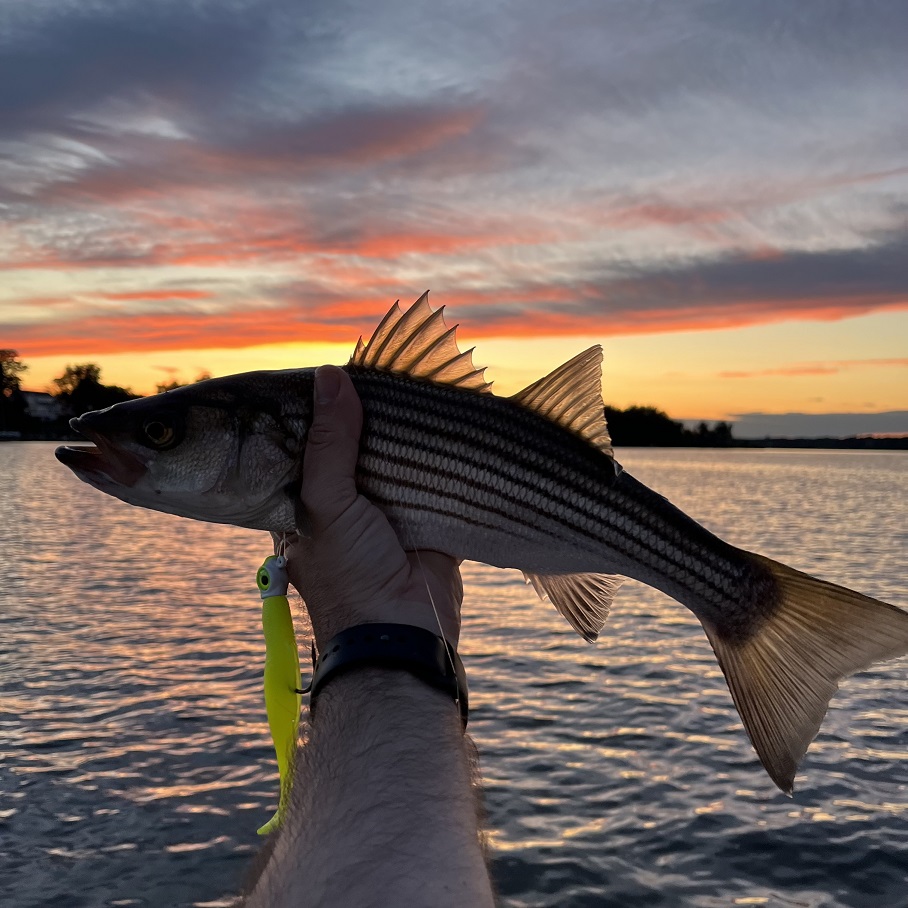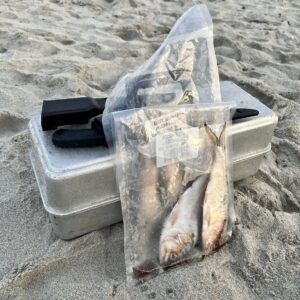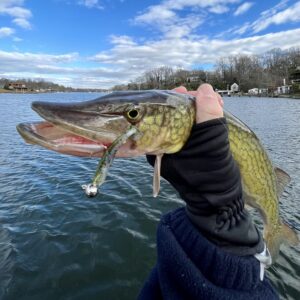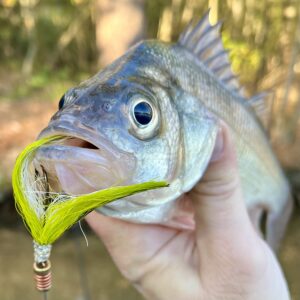We’re approaching mid-summer fishing patterns throughout the Chesapeake Bay region, notably in the middle Bay area and rivers. Fishing for striped bass has been very good lately, in part because stable weather has dominated and wind patterns have often been favorable for most craft on the water. Surface water temperatures have reached 76F in the middle Severn River, where I’ve had the good fortune this past week to fish several times, of which most outings were the evening/early-nightfall.
Schooling striped bass are feeding on peanut bunker. The small baitfish is abundant in many of the tidal rivers of the Bay right now, and you can find them very active and moving throughout the upper-third of the water column during low-light hours at dawn and dusk. Find the baitfish and you’ll find the stripers.
On back-to-back evenings this week, I joined good friends Derek and Jake for quick runs from the northern end of the Severn down into its middle—the Round Bay vicinity, where during each trip we located the many baitballs and breaking schools of fish in the 17″ to 26″ size range. These were healthy, frisky schoolies, the larger of which offered nice pullage during these early summer eves. Most of the fish were located within 100 yards of shoreline and points.
When you find a school of feeding stripers, you can throw just about any lure in the mix and hook up. This is an opportune time to toss topwater plugs of various action (poppers or spooks) for those fun, breakwater strikes. But often, you’ll find that its the smaller sized fish of a school that are busting up top. The larger specimens tend to feed just under them on scraps and dying baitfish that have floated down from the vicious school.
As such, I rigged only one particular lure and stuck with it—a white 3/4oz G-Eye jighead tipped with a 5″ Zman DieZel minnow in hot chartreuse color. Its a tried-n-true color pattern to mimic the small bunker. I had this tied to the end of my jigging/swimming setup, which is a 6’6″ medium fast action St. Croix Mojo Inshore rod paired with a 2500 class Penn Spinfisher VI reel. Fifteen pound Powerpro braid with a three-foot leader of 20# test yellow label Seaguar flourocarbon (the thinest diameter line to strength ratio they make) completes the rigging.
When approaching the schools, which were located near the baitballs on sidescan sonar, I personally would cast my offerring to the edges of the feeding fish and let the lure sink about 2 to 3 seconds before snap-jigging the offerring back toward the boat. This kept the lure swimming and bouncing below the surface frenzy but still within the top third of the water column.
Hookups were often and frequent each night. The sun had already dipped well past the horizon; evening was turned on and so were the fish. My personal best of the week went about 25″. Jake scored a 26″—he, too, opted for a 3/4oz jig with a 5″ paddletail. Derek hung in there with multiple 20″-plus fish, mostly brought in with a 4″ jerkbait. We all caught and released many fish within Maryland’s legal slot of 19–24″.
As daytime temperatures continue to reach new highs over these next few weeks, the most active windows of time to target striped bass in the middle Chesapeake’s many rivers will be dawn and dusk. The feeding windows narrow as temps climb. Your best moves will be night moves.
See y’all on the water again, real soon!


